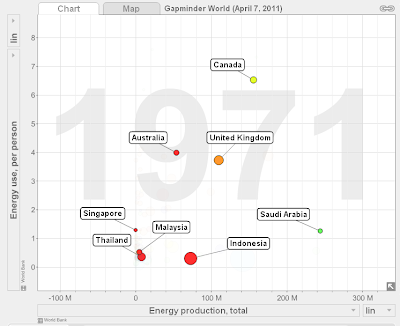1. Sisa cadangan gas alam di Indonesia mayoritas memiliki kandungan CO2 yang tinggi dan jauh dari pasar sehingga lebih cocok dijadikan metanol tidak LNG atau disalurkan melalui pipa.
2. Indonesia adalah negara kepualuan, sehingga membutuhkan bahan bakar cair yang mudah disimpan, dipindahkan, dikonsumsi dan diubah bentuknya dan yang paling murah biaya produksinya adalah metanol.
3. Indonesia mempunyai sumber energi primer yg sangat bervariatif sehingga untuk mengutilisasi semua fasilitas produksi, distribusi dan pemakaiannya secara efektif harus mempunyai satu medium penghantar (energy carrier), yang paling layak secara teknis dan komersial adalah metanol.
4. Metanol bisa dibuat dari berbagai sumber energi terbarukan seperti geothermal, biomassa, dll sehingga jaminan keberlangsungan produksinya di masa depan tinggi.
5. Kesediaan Metanol bisa menjadi penggerak industri fuel cell yg pengembangannya akan memberikan keunggulan komparatif industri manufaktur di Indonesia.
6. Metanol secara teori dapat diproduksi di seluruh pulau besar di Indonesia sehingga memberikan ketahanan ekonomi setempat dan membantu menjaga integritas wilayah NKRI.
7. Penggunaan Metanol dapat membantu meningkatkan akses masyarakat terhadap energi yang harganya terjangkau tanpa memerlukan subsidi pemerintah pusat sehingga memberikan perimbangan kesejahteraan antara masyarakat urban dengan masyarakat rural dan antara penduduk pulau Jawa dengan luar Jawa tanpa membebani APBN.
2. Indonesia adalah negara kepualuan, sehingga membutuhkan bahan bakar cair yang mudah disimpan, dipindahkan, dikonsumsi dan diubah bentuknya dan yang paling murah biaya produksinya adalah metanol.
3. Indonesia mempunyai sumber energi primer yg sangat bervariatif sehingga untuk mengutilisasi semua fasilitas produksi, distribusi dan pemakaiannya secara efektif harus mempunyai satu medium penghantar (energy carrier), yang paling layak secara teknis dan komersial adalah metanol.
4. Metanol bisa dibuat dari berbagai sumber energi terbarukan seperti geothermal, biomassa, dll sehingga jaminan keberlangsungan produksinya di masa depan tinggi.
5. Kesediaan Metanol bisa menjadi penggerak industri fuel cell yg pengembangannya akan memberikan keunggulan komparatif industri manufaktur di Indonesia.
6. Metanol secara teori dapat diproduksi di seluruh pulau besar di Indonesia sehingga memberikan ketahanan ekonomi setempat dan membantu menjaga integritas wilayah NKRI.
7. Penggunaan Metanol dapat membantu meningkatkan akses masyarakat terhadap energi yang harganya terjangkau tanpa memerlukan subsidi pemerintah pusat sehingga memberikan perimbangan kesejahteraan antara masyarakat urban dengan masyarakat rural dan antara penduduk pulau Jawa dengan luar Jawa tanpa membebani APBN.


